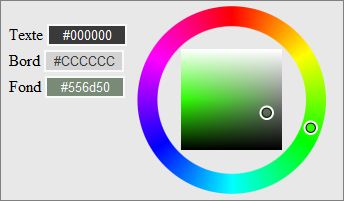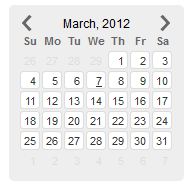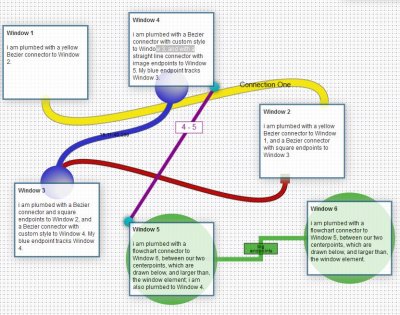jquery and its plugins for online applications
Choosing plugins for jQuery or without it to create web applications.
JQuery is the most used Ajax framework. This does not make it a forced choice, there are others that also have their advantages, but this allows you to have a number of plugins that expand its capabilities.
Here we are interested in extensions to help execute professional online applications.
List of plugins
Using a spreadsheet
Insert Table into Web Page... By linking this JavaScript framework to a table, an interactive dynamic spreadsheet is created that allows you to update data and customize values at the user's request. You can also use Datatable, which has functions close to or for a real spreadsheet, Ethercalc by Dan Bricklin, co-inventor of the spreadsheet.
Check compatibility with all browsers, especially on mobile devices.
This is a set of plugins that facilitate user-application interaction. This includes the calendar that is displayed when you specify a date, form objects, user interface features such as drag and drop, and the number of others.
Some features are now provided by HTML 5, but not in all browsers. Colorpicker uses Canvas, so HTML 5 remains indispensable, but the canvas implementation is broader than other features.


To select a date and fill in the input field from the calendar.
Diagram diagram
There are several graph libraries for jQuery, online, in columns or pie fractions. I have tried Flot in production and appreciate the opportunities we have to customize all aspects of the schedule. The job is pretty simple.
However, this is not without inconvenience. Using dates as data series is unreasonably difficult, although it is a fairly common use.
We will find an alternative to Flot with Flotr2 that suppresses dependence on jQuery and provides lighter code.
The simplest graph framework is Sparkline. Just put a list like <span> 1, 2, 3, 4, 5 </span> on the page and call the function with the identifier of this element to get the graph in Canvas. Peity has fewer features, but does circular graphs, and it's more of a gadget.
These bookstores do not support IE prior to version 9. Another complete library that has this support is gRahael. One cannot but name a D3.js, a framework for viewing data in a variety of forms, a file of impressive, but correlatively very full size. However, it will take time to learn how to use it.
Another solution is to create online graphics as an image and put that image on the page. See the Canvas section of this site.
To create a graphic consisting of sheets connected by pipes, as shown in the figure... There is a version for Mootool and YUI.

Widgets
And to complement the graphical interface, several widgets...
- jQuery++. A collection of procedures to help execute the application .
- MarkItUp. Turns a simple <textarea> tag into a text editor with icons, HTML functions,...
- Face detection. A JavaScript facial recognition plugin based on Liu Liu's algorithm.
- Parsley.js is a simple form verifier that will save you from writing code for your interface, possibly supplementing it with application-specific server code.
There are also many widgets that do not require jQuery and can work with it.
See also
- New HTML 5 attributes. HTML 5 offers advanced form tools, but compatibility is yet to come, as implementation tests have shown.
- Canvas widgets.
Documentation